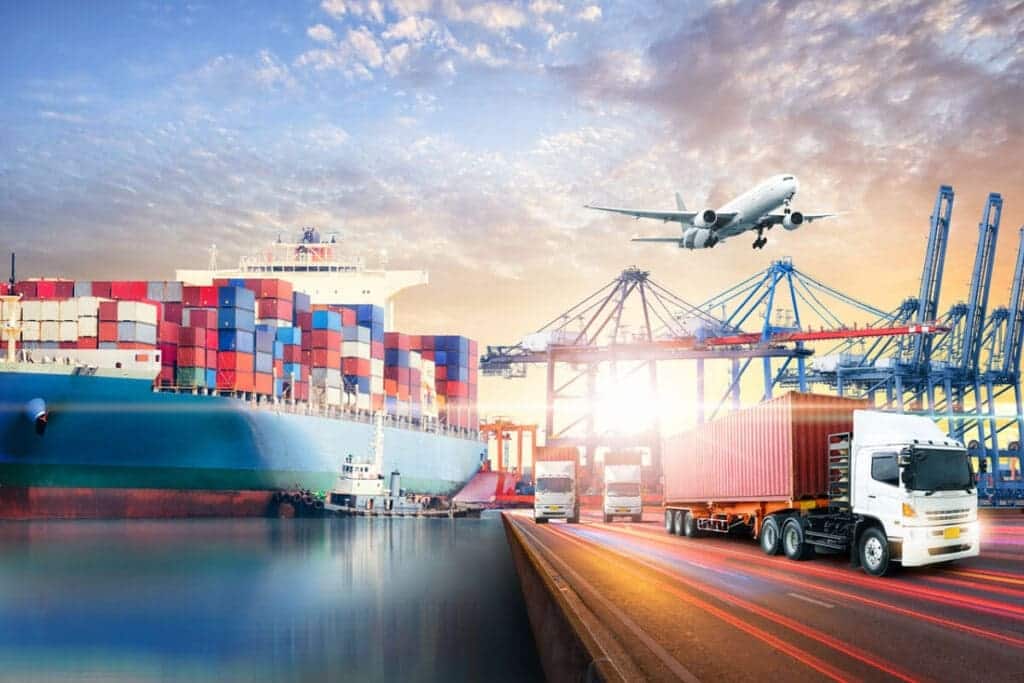If you want to send goods from one place to another, most people will use the words freight, shipment, and cargo for the goods being shipped. These words are used interchangeably to mean a product goes from one point to another.
The words freight, shipment, and cargo can mean the same thing, but there are also slight differences in their meanings. Freight has to do with goods being shipped from one point to another, usually for a fee. Cargo usually refers to goods being shipped by sea or air. And finally, shipment is when you ship several products via freight or cargo; today, shipment can also refer to shipping one single item to someone by a courier service.
Freight, Shipment Vs. Cargo Explained
When transporting goods from one location to another, most people may use the words freight, shipment, and cargo interchangeably. Even though using them interchanging is not necessarily incorrect, there can be some differences between these words.
Freight has to do with goods being shipped from one location to another for usually some fee. That is why many companies that transport goods from one place to another are called freight companies.

On the other hand, cargo has to do with goods being shipped internationally or even within the United States by sea or air. Cargo is about transporting goods from one location to another by air or sea.
Shipment is when you ship several goods from one location to another. The word shipment is not concerned with how the goods are sent, i.e., by what means, but that they are sent from one location to another.
It can be confusing that today almost all people will use the words freight, cargo, and shipment interchangeably, even though each can have slightly different meanings and implications.
As with many things to do with the English language, the words freight, cargo, and shipment have changed as our times have changed. When many of these words were first used, the only way load would go from one point to another was by sea. Today, cargo can be sent by sea, air, or even with containers placed on a train.
That is why the words have continued to have evolved.

History And Explanation Of The Word Freight
The word freight is known to come from the 14th Century Middle Dutch; it is from the word “freyght, “ which is the version of the modern-day word freight. But some say it can also come from the French word ”fret” or Spanish ”flete“ or Portuguese ”Frete.”
Freight is about goods being transported from one place to another; usually, freight is about making a payment or paying a fee to have the goods transported. Companies that will charge to transport goods from one point to another are usually referred to as freight companies.
History And Explanation Of The Word Cargo
The word cargo has been used since the mid-17th century. The word cargo comes from the Spanish word “cargar,” meaning ”a load” or ’to load.” The word freight is considered to be a synonym for cargo.
The word cargo refers to when materials and goods are transported by a vehicle, such as a ship, airplane, train, or truck. But cargo usually refers to goods being transported for commercial or business reasons.
Cargo refers to being able to carry a lot of items at one time. That is why a cargo ship with many containers will refer to all the containers as their cargo; this indicates there is more than one item and, instead, many things they are transporting.
History And Explanation Of The Word Shipment
The word shipment was first seen in the 18th century as the words ship and ment. Shipment usually refers to shipping either freight or cargo from one destination to another.
It usually has to do with several goods being shipped at one time, but today can also refer to sending a single item to someone through a courier service.
When looking at freight, cargo, and shipment, it is about moving goods and products around the world; it is interesting to know and understand when and how each of these can and should be used.
Find out more about how Mondoro can help you create, develop, and manufacture excellent home decor and furniture products – don’t hesitate to contact me, Anita. Check out my email by clicking here or become a part of our community and join our newsletter by clicking here.
Mondoro gives out a FREE Lookbook to anyone interested. You can receive a copy of our latest Lookbook by clicking here.
Listen to our Podcast called Global Trade Gal. You can find it on all major podcast platforms. Try out listening to one of our podcasts by clicking here.
Subscribe to our Mondoro Company Limited YouTube Channel filled with great videos and information by clicking here.
Related Content
What Are Some Reasons to Look Towards Manufacturing Your Products in Vietnam?
With the tariffs that countries like the United States have placed on China, Vietnam is one country that has become a clear winner in the trade war. One reason is that Vietnam has a relatively large, young, educated, and skilled population. The Vietnamese Government is also business-friendly, and the country continues to develop many excellent shipping ports.
To find out more you can read 8 Reasons to Look Towards Manufacturing Your Products in Vietnam by clicking here.
Why Should You Understand the Culture of Your Product Sourcing Country?
It is important to understand the culture of the country you are sourcing and purchasing your products from. Things you can do are: 1) check a map, 2) do your homework about the place you are buying from, 3) show a genuine interest in the country and culture, 4) try to learn a few basic words of the local language, 5) see a few of the cultural sites, 6) be adventurous in trying new foods, 7) ask intelligent questions about the country and 8) find topics of conversation that will reach out across the cultural divide.
You can find out more by reading 8 Tips to Understand the Culture of Your Product Sourcing Country by clicking here.
What Are Some Great Vietnamese Home Decor Finishes?
Vietnam offers many techniques, materials, and finishes that we love. Some of our favorites include Vietnamese lacquer, mother of pearl, eggshell, and faux paper finishes. We also do some unique woven rattan and linen techniques. Both spun bamboo, water hyacinth, and seagrass are some great natural looks. Vietnam also offers some amazing ceramic finishes and techniques. And they have thriving outdoor furniture and accessories products in some interesting finishes and techniques.
You can find out more about different finishes that Vietnam offers for your home decor and home furniture product sourcing needs by reading our blog 10 Great Vietnamese Home Décor Product Finishes and Techniques We Love by clicking here.

